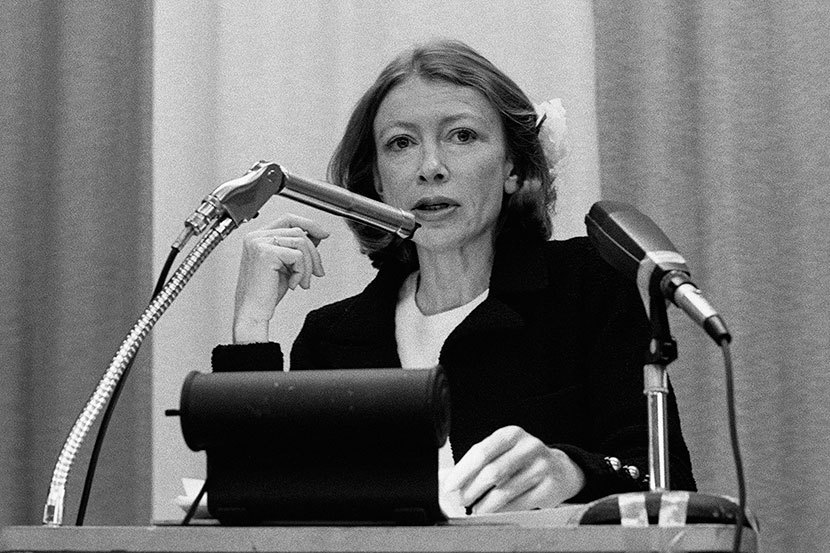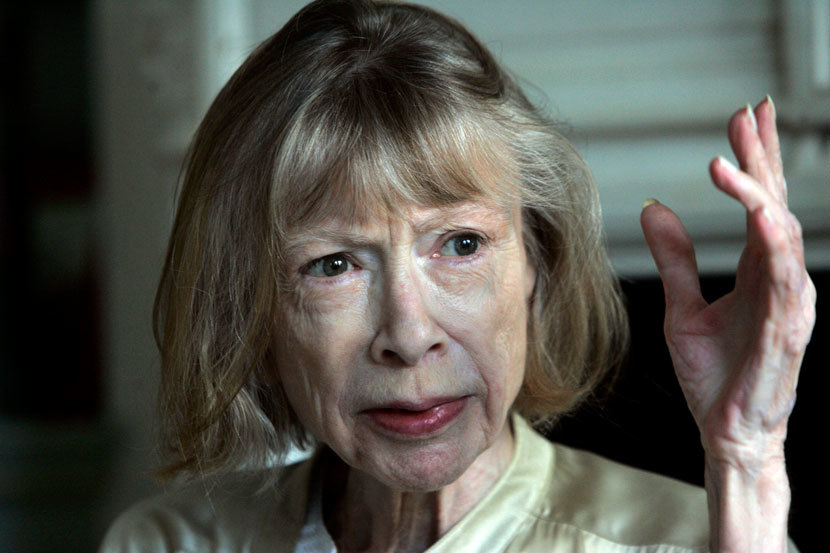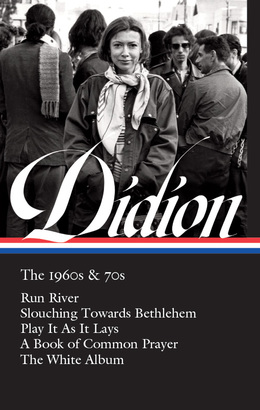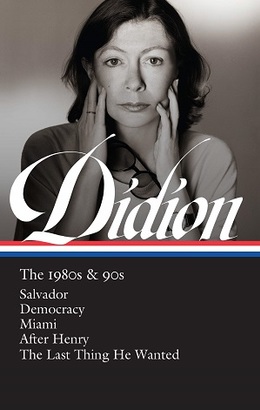
Joan Didion died at her home in New York City on December 23, 2021, at the age of 87. The author of five novels and twelve works of nonfiction, she is represented in the Library of America series by the collections Joan Didion: The 1960s & 70s and Joan Didion: The 1980s & 90s.
To commemorate Didion’s passing, we present tributes to her work from several contemporary writers, followed by lists of Didion-related resources on loa.org and elsewhere.
Kate Bolick
Joan Didion left us so much to learn from, across so many forms. I keep returning to her cultural criticism. Her 1991 essay “New York: Sentimental Journeys,” about the Central Park jogger case, is a master class in analyzing and describing an event using multiple perspectives simultaneously—novelist, beat reporter, gum-shoe detective, literary critic, historian—unrivaled even among her fellow New Journalists. If I’d had the chance to meet her, it’s that essay I would have wanted to ask her about. So in 2017, when Bob Silvers died, I was intrigued to see her mention it in her memorial of him: Silvers “knew what the piece had to be—he knew before I did—and he pushed me until I got it there,” she wrote. “He knew exactly how dangerous the subject was, and his reaction to this danger was to make it more dangerous. . . . Regardless of whatever negative reaction it might elicit in the city at that moment.” I confess to having felt a wave of selfish relief: Even the great Didion needed editorial guidance! But this curdled, with her death, into something more foreboding. Publishing and media have devolved to such a degree that even if someone starting out has the brilliance and tenacity to attempt to follow in Didion’s footsteps, will there be enough outlets, or editors, to allow it?
Steph Cha
There are writers who cast big shadows, and then there’s Joan Didion, who wrote so beautifully and definitively about so many places/subjects/states of mind that I can’t read or write or even think very long without activating the part of my brain that holds onto her work. Slouching Toward Bethlehem and The White Album are two of my favorite essay collections of all time, and Play It As It Lays is one of my favorite novels. She’s staked out an enormous amount of geographical and emotional territory in my internal map of the world.
Then, almost separately, there’s her prose style, the incisive clarity of her writing. I first read her in my mid-20s, when I was coming into my own as a writer, and I’ve been emulating her ever since—not even her voice (I would never try for that), but her ability to write with precision and elegance in a way that made her work supremely readable, rather than dense with the brambles of her intellect. I would be a different writer if I’d never read Didion.
Laila Lalami
I came to Joan Didion’s work in my late twenties, when I was trying to get acquainted with the state that had recently become my home. I still remember the awe I felt when I read Slouching Towards Bethlehem. Here was a writer who could look at other people’s lives as well as her own with the same unsparing eye, the same attention for singular detail. Over the years I read and reread her essays and novels, studied her syntactic style, marveled at her deployment of the telling quote, and admired the way she moved so fluidly between fiction and nonfiction. No one captured the danger of myths or the power of place quite like she did.
David L. Ulin (editor of LOA’s Didion edition)
Joan Didion made me want to be an essayist. There’s no more accurate or fitting tribute I can offer in her memory. But in working on Library of America’s Didion edition, I became aware, in a way I hadn’t quite before, of the power and significance of her fiction, and how it both informed and was informed by her nonfiction, the way her body of work ebbed and flowed as an integrated whole. From California to Central America, from cultural and political narratives to personal ones. At the center of it all was that voice, that eye, that spectacular and nuanced distance, assessing and recording the surfaces as a necessary excavation of everything that lies beneath.

JOAN DIDION ON LOA.ORG
Joan Didion: The Art of Storytelling
May 19, 2021
When Joan Didion met Jean Stafford
April 22, 2021
Story of the Week: Joan Didion, “L.A. Noir”
April 9, 2021
David L. Ulin on the early Joan Didion: Dread, disruption, and “a writer responding to her moment”
December 4, 2019
Story of the Week: Joan Didion, “Quiet Days in Malibu”
November 15, 2019
The New York Review of Books has made available a complete archive of Didion’s writing for that publication, and The New Yorker offers testimonials from Hilton Als, Emma Cline, and Zadie Smith. Bookforum remembers Didion with Gary Indiana on her 2011 memoir Blue Nights and Sarah Nicole Prickett on South and West: From a Notebook (2017), which collects Didion’s travel diaries from the 1970s.





